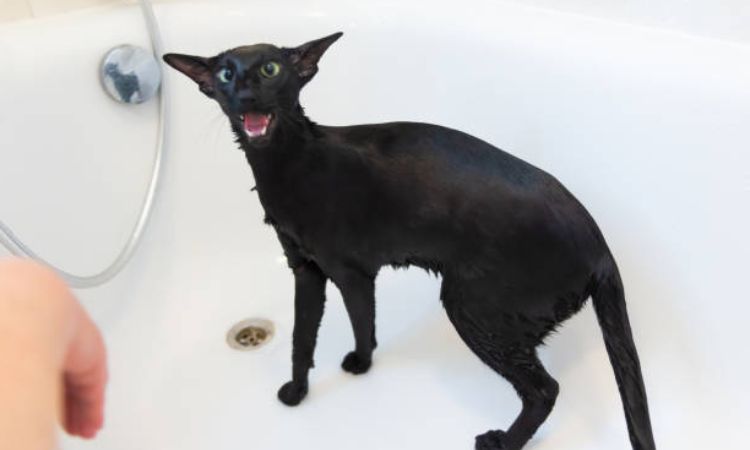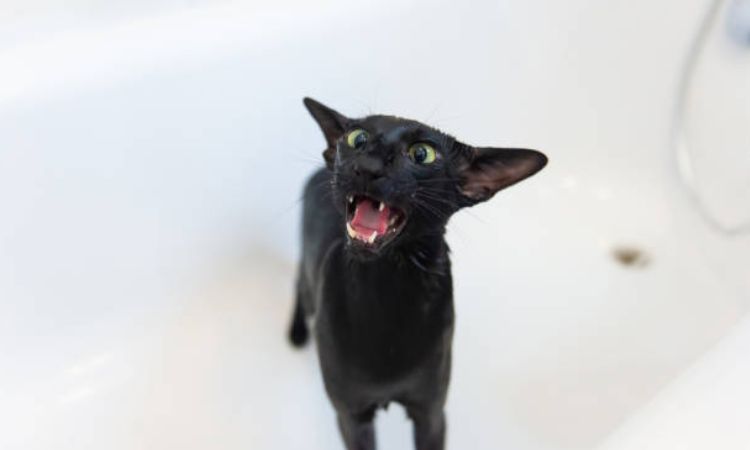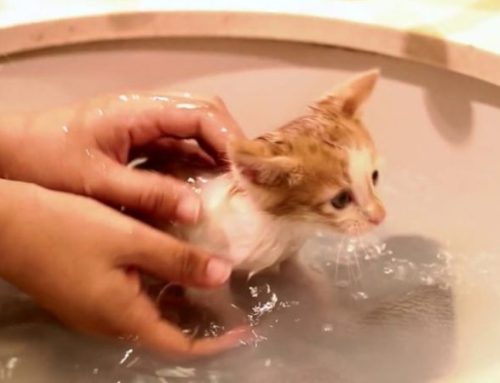If you’ve ever discovered a little surprise in your bathtub, you know the frustration of a cat who refuses the litter box. Why would a creature so fastidious about cleanliness choose such an unusual spot? You’re not alone this baffling behavior leaves many cat owners scratching their heads. Keep reading to uncover the reasons behind this quirky habit and learn how to guide your feline friend back to proper bathroom etiquette.

Common Reasons for Tub Pooping
Cats are generally clean and meticulous animals, so when they start pooping in the bathtub, it is usually a signal that something is wrong. This behavior is rarely random and can stem from medical, behavioral, or environmental causes. Understanding the root cause is essential for addressing the problem effectively.
Medical Causes
Gastrointestinal Problems
Cats experiencing digestive issues may develop urgency or discomfort that makes using a litter box challenging. Common problems include:
- Diarrhea – Loose or watery stools may make it difficult for a cat to reach or use their litter box comfortably.
- Inflammatory Bowel Disease (IBD) – Chronic inflammation can cause pain, urgency, and frequent defecation.
- Parasites or Food Intolerance – These can lead to inconsistent stool, gastrointestinal discomfort, and accidents outside the litter box.
Cats with these conditions may avoid the litter box if they associate it with discomfort or pain. Prompt veterinary evaluation is crucial to diagnose and treat the underlying issue.
Mobility Issues
Arthritis, injuries, or general aging can limit a cat’s ability to climb into high-sided litter boxes or maintain a squatting position. Older cats may find large or tall litter boxes uncomfortable, prompting them to seek an easier, more accessible spot, like the bathtub. Declawed cats may also experience foot discomfort when stepping on certain litter textures, further discouraging litter box use.
Cognitive Dysfunction
Senior cats may develop cognitive decline, often referred to as feline dementia. This condition can cause confusion, disorientation, and altered toileting behavior. Cats with cognitive dysfunction may forget where litter boxes are located or fail to recognize them as an appropriate bathroom spot, leading to tub pooping or accidents in other unusual places.
Behavioral Causes
Stress or Anxiety
Cats are highly sensitive to changes in their environment. Stressors such as new pets, visitors, moving to a new home, renovations, or loud noises can trigger anxiety, causing them to seek safe, quiet areas for elimination. Even environmental factors like cold weather or rain can discourage outdoor toileting, making an indoor bathtub more appealing.
Litter Box Aversion
Some cats develop strong preferences or aversions related to their litter box. Common factors include:
- Dirty litter – Cats often refuse to use litter boxes that are not scooped regularly.
- Disliked litter type – Fragrances, texture, or dust may deter use. Unscented, fine-textured litter is usually preferred.
- Improper placement – Boxes located in noisy, high-traffic areas or near food and water can discourage use.
- Size or type issues – Older or arthritic cats may need low-sided boxes, while active cats may prefer larger boxes to feel comfortable.
Bad Previous Experiences
A negative or uncomfortable experience in the litter box, such as pain during defecation due to constipation or being startled while using the box, can lead cats to associate the box with discomfort. Over time, this can cause them to seek alternative locations, like the bathtub, for privacy and safety.
Environmental Factors
Multiple Cats
In multi-cat households, competition for litter boxes is common. Cats are territorial, and some may avoid a box frequently used by another cat, particularly if they feel intimidated or stressed. Providing one more litter box than the number of cats is a well-established strategy to reduce competition and encourage proper use.
Bathtub as a Private, Quiet Space
The bathtub may appeal to stressed or anxious cats because it is enclosed, quiet, and away from household activity. Cats often seek out safe spaces for elimination where they feel protected and undisturbed, and the bathroom can provide an ideal sanctuary.

Step-by-Step Solutions
Immediate Actions
The first step in addressing bathtub pooping is to rule out any underlying health issues. A visit to the veterinarian ensures that your cat isn’t struggling with gastrointestinal distress, mobility limitations, or age-related discomfort that makes the litter box difficult to use. Conditions such as colitis, intestinal parasites, arthritis, or even mild inflammation can lead cats to seek out unusual places to defecate. A medical evaluation provides clarity and prevents you from misinterpreting a physical problem as a behavioral one. Once health concerns are eliminated or treated, you’ll have a much clearer path toward resolving the behavior.
After checking your cat’s health, turn your attention to the bathroom itself. Clean the bathtub thoroughly using an enzymatic cleaner designed to break down organic residues at a molecular level. Regular cleaners may smell pleasant to us, but cats’ noses are far more sensitive and can still detect traces of waste. If the scent remains, your cat may continue to view the tub as an acceptable bathroom substitute. A deep enzymatic cleaning erases all odor cues and removes any lingering associations your cat may have with the spot.
While retraining is underway, provide a practical, temporary solution to steer your cat back in the right direction. Placing a litter box in the bathroom—or even directly inside the dry tub—offers your cat a convenient and acceptable option in the same space they already prefer. This reduces the chance of further accidents and allows you to guide your cat toward the correct behavior without confrontation. Once they consistently use the temporary box, you can gradually relocate it to your desired area.
Long-Term Prevention
Long-term success depends heavily on maintaining an ideal litter box setup. Cats are particular creatures, and any frustration with the cleanliness, placement, or accessibility of their bathroom can push them to search for alternatives. Scoop daily, refresh litter frequently, and ensure the box is easy to reach for cats of all ages. A good rule of thumb is one box per cat plus one extra, spread out across the home rather than clustered together. This prevents crowding and territorial conflicts, especially in multi-cat households.
If the problem persists, experiment with different types of litter and box designs to find your cat’s preference. Some cats dislike scented litter, while others avoid coarse textures or enclosed boxes. Trying out various styles—open pans, covered boxes, high-sided options, or larger formats—helps you identify what your cat finds most comfortable. A small change in substrate feel or box layout can completely transform their willingness to use it consistently.
Creating a calm, predictable environment is another critical part of preventing future accidents. Stress, sudden changes, and disruptions in routine can trigger inappropriate elimination. Help your cat feel secure by establishing stable daily patterns, providing hiding spots, and using pheromone diffusers to promote relaxation. These tools reduce anxiety and make your cat less likely to seek out quiet, isolated spaces like the bathtub for bathroom needs. While closing the bathroom door can stop immediate incidents, it should be treated as a temporary measure. Address the root cause—whether medical, environmental, or emotional to ensure the problem doesn’t simply shift to another location.
Behavioral Retraining
Retraining your cat to rely on the litter box again requires patience and positive reinforcement. Celebrate every correct use of the box with gentle praise, treats, or affection. These rewards help your cat form strong, positive associations with the litter box and encourage consistent habits. Reinforcement works best when delivered immediately after the desired behavior, reinforcing the connection between the action and the reward.
It is equally important to avoid punishment of any kind, even when accidents feel frustrating. Scolding, startling, or physically moving your cat toward the litter box can increase fear and stress—two major drivers of inappropriate elimination. Punishment not only fails to correct the issue but often makes it significantly worse by breaking trust and heightening anxiety. Focus on creating supportive conditions, understanding your cat’s signals, and reinforcing good habits rather than reacting to mistakes.

Frequently Asked Questions
What health issues cause cats to poop in the bath?
Several medical problems can push a cat to abandon its litter box and choose places like the bathtub. Gastrointestinal issues—such as diarrhea, constipation, inflammatory bowel disease (IBD), or food intolerances—can make elimination uncomfortable or urgent, causing the cat to seek out a large, easy-to-clean surface. Parasites like worms can also irritate the digestive tract and lead to sudden litter box avoidance. Mobility issues, especially in older cats, may make climbing into a high-sided litter box painful; arthritis, hip discomfort, or spinal problems often result in cats seeking a flat, accessible surface instead. Senior cats may also develop cognitive dysfunction, which affects their memory and routine behavior and leads to confusion about where the litter box is located. Any sudden change in bathroom habits should be treated as a potential medical red flag.
How can I stop my cat from this behavior quickly?
The quickest way to interrupt bathtub pooping is to take a multifaceted approach: block access, clean thoroughly, and offer an appealing alternative. First, clean the tub with an enzymatic cleaner to remove lingering odor cues that might be drawing your cat back. Next, temporarily close the bathroom door or place a small amount of water in the tub to make it unattractive. At the same time, provide your cat with an easy-to-reach litter box near the bathroom to redirect the behavior to the right spot. Scoop the litter frequently to keep it pristine, as many cats avoid boxes that aren’t spotless. If your cat is stressed or anxious, adding pheromone diffusers and maintaining a predictable routine can calm them enough to return to proper litter habits. Keep in mind that quick solutions help stop the immediate behavior, but long-term success requires identifying the root cause.
Will changing the litter box help?
Yes—changing the litter box often makes a significant difference. Some cats dislike covered boxes, boxes that are too small, or boxes positioned in busy or noisy areas. Others avoid litter that smells strong, feels rough, or clumps heavily. Switching to a larger, open-style box or experimenting with different litter textures can dramatically improve your cat’s comfort. In multi-cat homes, adding extra litter boxes is essential to reduce competition and territorial stress. A good rule to follow is one box per cat plus one extra, each placed in a separate area of the home. Providing clean, accessible, and cat-friendly options helps prevent them from seeking alternative “bathroom” spots like the tub.
Do I need to see a vet, and what should I expect?
Veterinary evaluation is recommended anytime your cat shows a sudden or persistent change in bathroom habits. During the exam, your vet will discuss your cat’s recent behavior, diet, stress levels, and home environment. They may perform a physical exam, check for pain or mobility issues, and recommend diagnostic tests such as bloodwork, fecal analysis, urinalysis, or X-rays to rule out digestive, urinary, or orthopedic conditions. If a medical problem is found, your vet will create a treatment plan that may include medication, dietary changes, parasite control, or mobility support. If the veterinarian rules out health issues, they can guide you toward behavioral or environmental solutions, and in more complex cases may refer you to a feline behaviorist. Visiting a vet early helps prevent complications and speeds up resolution of the bathtub-pooping behavior.
Related Reads:






